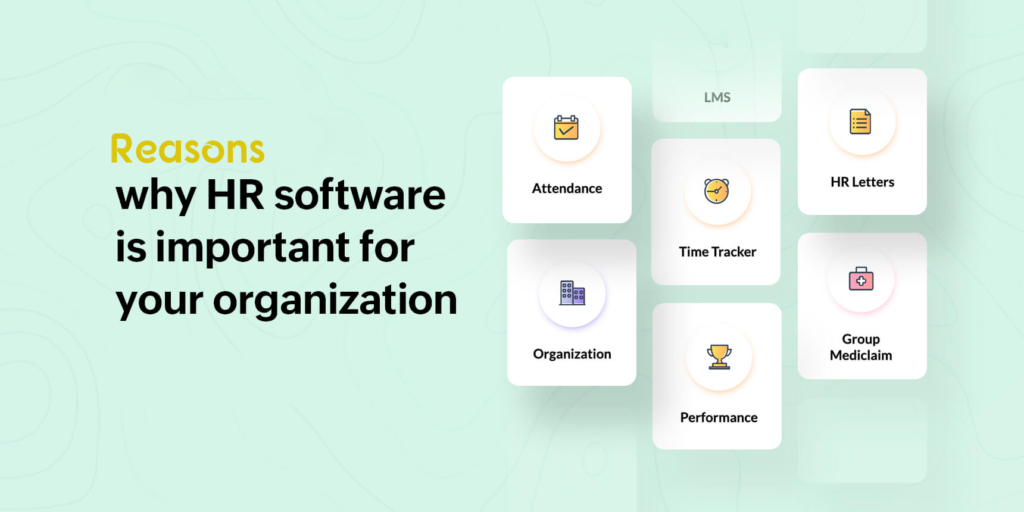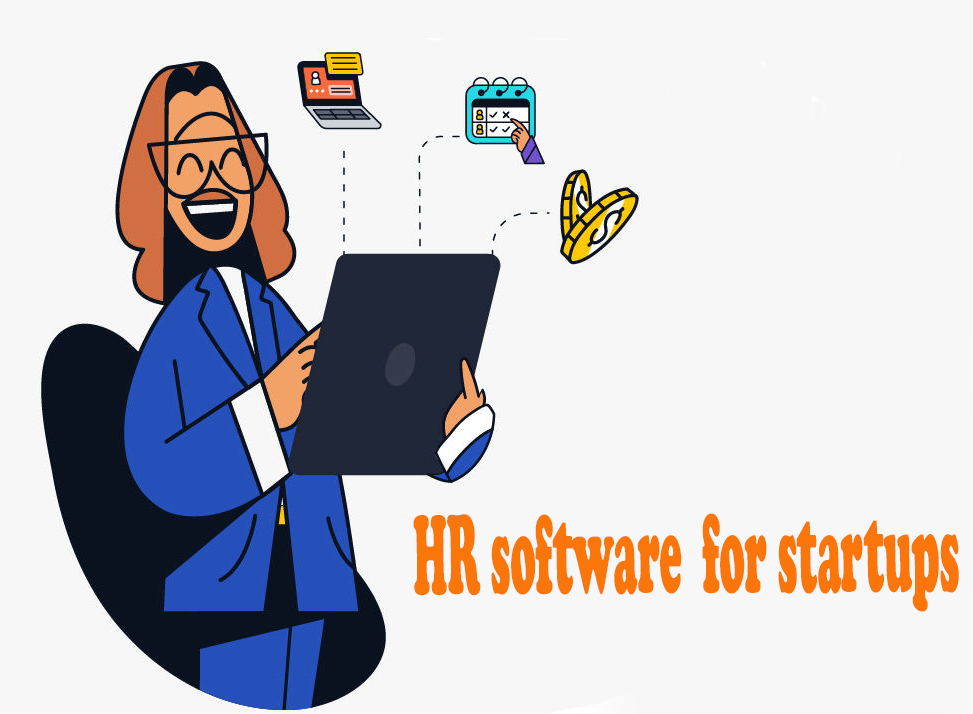Choosing the right HR software can seem like a daunting task, especially when you’re inundated with an array of options.
You might find yourself lost in forums and LinkedIn posts where people grumble about how hard it is to select the perfect HR solution for their business.
“You can’t pick a suitable HR system without understanding your needs, but you don’t understand your needs until you’ve used an HR system.” This isn’t necessarily true.
The truth is that there are many businesses out there reaping immense benefits from top-notch HR software, which have revolutionized their human resource management processes and significantly improved productivity.
The need for effective HR solutions is real.
Navigating the Selection of Your Business’s HR Software
When it comes to enhancing your business operations, selecting an appropriate HR software solution is a critical decision. It requires careful consideration of various factors such as industry specifics, company size, and unique human resources needs.
The first step: Understand your HR requirements
In the words of Peter Drucker, “There is nothing so useless as doing efficiently that which should not be done at all.” This rings true when choosing suitable HR software for your organization. Understanding what exactly you need based on its structure, sector, and size will save both time and resources in finding the right fit.
Pinning Down Your Unique Needs
A small startup might require basic features like managing employee data or payroll functionality, while larger corporations may necessitate comprehensive human capital management (HCM) solutions, inclusive of performance management tools and benefits administration systems.
Evaluating Various Types Of HR Software Systems Available In The Market Today
Different types have different strengths – Core HR platforms provide essential functions such as document management or time tracking, whereas function-specific applications are more specialized, focusing on areas like recruiting with applicant tracking system capabilities.
Your key takeaway here: Knowing these options inside out can significantly streamline common HR tasks within any organization by ensuring selection aligns with specific needs.
Boost your business operations with the right HR software. Understand your unique needs and evaluate various systems to find the perfect fit. #HRSoftware #BusinessOptimizationClick to Tweet
Top-Rated HR Software Solutions in the Market
The realm of HR software solutions is vast and diverse, with myriad options catering to various business needs. However, two platforms rise above the rest due to their comprehensive capabilities: ADP and Bob.
Navigating through a sea of HR software systems can be daunting.
A wise man once said, “Choice not chance determines our destiny.”
Selecting an ideal HR management software involves careful consideration of your unique requirements coupled with thorough research on available offerings. Comprehending the attributes and benefits of assorted HR systems can assist in making a well-informed choice.
Lanteria – Best for mid-sized and large businesses
Lanteria is a leading developer of Human Resource Management, Talent Acquisition, Performance Management, and Learning Management software, based on a Microsoft SharePoint platform.
ADP – Best Overall Solution
Recognized as one of today’s top human resources information systems, ADP’s strength lies in its flexibility. It offers a broad suite designed for businesses across all sizes and industries.
Its user-friendly interface ensures easy navigation while performing common HR tasks like payroll processing, time tracking, etc.
Bob – Best for Startups
Bob, an affordable yet robust solution, simplifies core HR functions such as employee onboarding, performance reviews, etc., freeing up valuable time that small businesses can dedicate towards growth.
This platform also stands out because it fosters a culture-first approach which enhances team engagement while maintaining compliance with labor laws. Moreover, it integrates seamlessly with popular apps used by startups, thereby enhancing productivity.
Navigating the vast realm of HR software? ADP and Bob rise above with comprehensive capabilities. From payroll processing to fostering a culture-first approach, they’ve got you covered. #HRSoftware #BusinessGrowthClick to Tweet
Benefits of Implementing Cloud-Based HR Software
The digital transformation wave has hit human resources as well, and the outcome is cloud-based HR software. This shift not only enhances accessibility but also provides scalability, more robust safety measures, and cost-efficiency.
Welcome to the era of accessible HR management.
In an age where work from home is becoming the norm rather than the exception, cloud HR software solutions are paving the way for remote access to crucial data. Employees can easily update personal information or request time off without being bound by office walls.
This level of flexibility empowers remote teams while promoting agility in managing employee records. It allows managers to oversee team activities effectively even when they are out on business trips or vacations.
Scalability Meets Cost Effectiveness with Cloud-Based Solutions
A significant advantage offered by these systems lies in their ability to scale according to your operational needs. Unlike traditional on-premise systems that require heavy upfront investment, you pay as per usage here, thus reducing overall costs significantly.
Data Security – A Non-Negotiable Aspect
In addition, automatic backups guarantee seamless operations even if disaster strikes unexpectedly, whereas compliance tools help adhere to various regulations like GDPR (General Data Protection Regulation).
Ride the digital transformation wave with cloud-based HR software. Boost accessibility, scale effortlessly, and secure your data while saving costs. Welcome to the era of flexible and efficient HR management. #HRSoftware #DigitalTransformationClick to Tweet
Key Executives and Their Role in Implementing New HR Software
The integration of new HR software into a business’s operations is no small feat. Executives such as CIOs, CTOs, CFOs and CEOs must be involved to ensure successful integration of new HR software.
CIO: The IT Strategist
In any organization considering an upgrade to its HR management system or implementing cloud-based HR software for the first time, it’s crucial that Chief Information Officers (CIO) are on board with this change. As overseers of IT strategy within their companies, they’re responsible for ensuring that all tech-related initiatives align with overall business objectives while also maintaining data security protocols.
CTOs: Navigating Technical Challenges
Moving onto another vital player in this process – the Chief Technology Officer (CTO). Unlike their counterparts who focus more on strategic alignment, these individuals dive deep into technical aspects like how well does the proposed solution integrate with existing enterprise resource planning systems? They evaluate interoperability between different platforms used by the company, which includes both core HR solutions as well as other function-specific applications. This proactive approach helps foresee potential challenges during the implementation phase, thereby reducing downtime associated with transitioning to a new system.
CFOs: Assessing Financial Implications
Last but not least, we have our financial wizards – the Chief Financial Officers (CFO). When introducing something as significant as human resources information systems (HRIS), one cannot overlook the financial implications tied to it. These experts scrutinize everything from upfront costs involved in acquiring said platform right down to long-term return on investment (ROI).
This thorough analysis ensures businesses make informed decisions about investing wisely rather than being swayed merely by flashy features or aggressive marketing campaigns often seen when choosing among various available HR software solutions.
Key Takeaway:
Choosing the right HR software isn’t a one-man show, but a team effort involving key executives like CIOs, CTOs and CFOs. They ensure tech initiatives align with business goals, foresee technical challenges and assess financial implications for an informed investment decision.
Key Features to Consider in an Optimal HR Software Solution
Selecting the right HR software solution for your business is no small task. It requires a deep understanding of your company’s unique needs and goals, along with knowledge about what features various platforms offer.
The Value of Employee Self-Service Portals
An employee self-service portal can greatly improve user experience within any organization. This feature empowers employees by allowing them to manage their personal information, benefits enrollment, and time-off requests independently. The result? A significant reduction in administrative load on HR staff.
This isn’t just about convenience though; it also fosters transparency as it provides real-time access to important data such as pay stubs or leave balances. An effective employee self-service portal leads directly to increased levels of engagement among employees – a key factor contributing towards overall job satisfaction.
User-Friendly Interface: Essential for All Users
A user-friendly interface should be high up on the list when selecting an ideal HR software platform. Whether you’re dealing with tech-savvy millennials or baby boomers who might not be so digitally inclined – having intuitive navigation ensures smooth adoption across all departments within your organization.
The simplicity with which users can navigate through different HR tasks has direct implications on productivity levels amongst team members. Therefore, investing in a system that boasts clean design elements coupled with simple navigational aids like search bars or dropdown menus will significantly boost efficiency.
Payroll Functionality & Document Management Capabilities
Integrating payroll functionality into chosen HR tools simplifies complex processes associated with tax calculations and overtime payments. By automating these functions via integrated systems, businesses minimize errors stemming from manual entry methods.
In today’s digital age where remote work is increasingly common, comprehensive document management capabilities are crucial too. They allow secure storage, easy retrieval, and efficient tracking of essential documents relating to contracts, performance reviews, etc.
Key Takeaway:
The right HR software can streamline your business processes by offering features like employee self-service portals, user-friendly interfaces, payroll functionality and document management capabilities. It’s not just about convenience; it’s also about fostering transparency, boosting productivity and minimizing errors.
Emerging Trends in Human Capital Management (HCM) Software
In the ever-evolving landscape of technology, HCM software is no exception. The future holds several transformative trends that promise to redefine HR tasks and processes.
The Rise of Artificial Intelligence
Imagine automating repetitive HR functions like screening resumes or scheduling interviews – this is precisely what AI integration into HCM systems aims to achieve. It’s a game-changer for HR professionals who can now focus on strategic decision-making while leaving mundane tasks to intelligent machines.
Making proactive decisions about talent acquisition and retention strategies becomes easier with predictive analytics tools integrated within your core HR software. Leveraging historical data patterns, these tools help anticipate workforce needs well ahead of time, ensuring you’re always prepared.
We live in an era where remote work has become commonplace; hence mobile accessibility isn’t just a ‘nice-to-have’ feature anymore—it’s essential. Modern cloud-based HR software solutions are designed keeping mobility at their heart—enabling employees and managers alike access vital information anytime from anywhere.
Fostering positive employee experiences forms the cornerstone of successful human resources management today—a trend reflected clearly in contemporary HCM software designs as well. With user-friendly interfaces promoting personalized content delivery, enhancing employee engagement becomes effortless.
Discover how emerging trends in HCM software are transforming HR tasks. From AI automation to predictive analytics, get ready for a revolution in talent management. #HRtech #AIinHRClick to Tweet
Maximizing the Power of SAP SuccessFactors for Large-Scale Businesses
In a world where effective human capital management (HCM) is crucial, SAP SuccessFactors emerges as an optimal choice for large enterprises. This potent platform boasts features designed to streamline HR processes and elevate overall business performance.
SAP SuccessFactors: A Comprehensive Suite Tailored For Your Business Needs
The old adage goes, “A stitch in time saves nine.”
Managing your company’s most valuable asset – its workforce – effectively can help save time and resources in the long run. With SAP’s comprehensive suite that caters to various HR functions such as payroll functionality, time tracking, and talent acquisition among others, you can stay ahead of potential issues before they escalate.
Digging deeper into their offerings reveals powerful analytics tools capable of generating insightful reports on employee performance trends, helping executives make informed decisions.
A Closer Look at Performance Management with SAP SuccessFactors
The standout feature within this HCM solution is undoubtedly the Performance & Goals module which allows managers not only to set clear objectives but also to track progress against these goals throughout the year.
This system fosters a continuous feedback culture ensuring employees are aligned with organizational goals while promoting professional growth.
Furthermore, the unique 360-degree reviews function facilitates a holistic view of an individual’s skills by collecting feedback from multiple sources including peers or external parties.
Talent Acquisition Simplified: Leveraging Recruiting Software Module Within SAP SuccessFactors
With the job market becoming increasingly competitive, it can be difficult to draw in top-notch talent.
However, the recruiting software module simplifies the hiring process through automation.
From posting jobs across numerous channels to scheduling interviews, this tool streamlines every step involved in acquiring new talent, thereby freeing up HR professionals’ bandwidth so they can focus more on strategic tasks rather than administrative ones.
Remember Benjamin Franklin once said, “If you fail to plan, you’re planning to fail.” So why leave things up to chance? Implementing robust HRM solutions like SAP
Key Takeaway:
Unlock the full potential of your workforce with SAP SuccessFactors. This HR software streamlines processes, offers powerful analytics, and fosters a feedback culture for continuous improvement. Plus, its automated recruiting module makes talent acquisition a breeze.
Rule 5: Do not include Introduction or Conclusion Header.
No need to waste time on preliminaries; experienced investors and entrepreneurs want to get right into the heart of HR software solutions such as cloud-based platforms, performance management systems, or applicant tracking tools. Your audience – seasoned investors and entrepreneurs – are here to dive straight into core topics like cloud-based HR platforms, performance management systems, or applicant tracking tools.
No need for a warm-up lap. If you’re discussing something as pivotal as HR software selection, your readers don’t require an introduction explaining what these systems do. They already know. What they want is in-depth insights on how to choose between vendors like ADP and BambooHR.
“In conclusion” is outmoded too. Instead of summarizing points made earlier about human capital management (HCM) trends or benefits administration features, why not stimulate further thought? Ask questions that keep them pondering long after reading your piece.
Avoid Conclusions: Keep The Conversation Alive.
Rather than concluding discussions on crucial aspects such as employee engagement strategies using HR tools, pose stimulating queries. Encourage reader interaction by inviting their experiences with renowned HR applications such as SAP SuccessFactors. This keeps conversations alive even post-reading.
Ditch Introductions And Still Engage Readers Effectively
The key lies in creating engaging content without traditional beginnings or endings. Each section should be insightful independently while contributing towards the overall understanding of complex themes like document management capabilities within various HR platforms, etcetera. Remember: every paragraph counts when retaining attention amidst today’s digital noise; ensure each one delivers substantial value sans unnecessary introspections or wrap-ups. Use this approach next time you write about anything from payroll functionality to managing employee records effectively through advanced HR solutions.
Optimize your HR processes with the right software. Dive into in-depth insights on choosing between vendors like ADP and BambooHR. Keep conversations alive by asking thought-provoking questions about employee engagement strategies using renowned HR tools. #HRT #HRsoftwareClick to Tweet
Rule 6: Do not include any FAQs in Headers
The architecture of your blog post is a critical factor, influencing both reader engagement and SEO performance. A common pitfall many authors stumble into involves incorporating Frequently Asked Questions (FAQs) within their headers – an approach that’s counterproductive to efficient content structuring.
This misstep leads to cluttered posts that are difficult for readers to navigate.
In the words of Albert Einstein, “If you can’t explain it simply, you don’t understand it well enough.”
Your HR software solution article should be as clear as crystal without requiring additional clarification questions interspersed throughout its sections. Moreover, adhering strictly to HTML formatting rules means headings summarize main points or topics rather than posing queries.
Strategic Placement for FAQ Sections
If integrating FAQ segments remains essential for your SEO strategy, consider placing them towards the end after discussing all core HR features and benefits of different human resources information systems on offer today. This way, interested readers seeking specific answers beyond what has been covered earlier find this section easily accessible.
Sidestepping Common Mistakes
Avoid framing question phrases as headers since these do not accurately encapsulate key ideas being discussed under each section – stick with descriptive statements instead. As we move forward in our exploration about how best businesses can choose HR software solutions fitting their unique needs, let’s remember: simplicity breeds clarity.
Crafting clear, engaging blog posts on HR software? Avoid FAQs in headers for efficient content structuring. Remember: simplicity breeds clarity. #HRSoftware #ContentWritingTipsClick to Tweet
Conclusion
Unraveling the intricacies of HR software can be quite a journey.
You’ve uncovered how to pick the correct alternative for your organization’s one of a kind necessities.
Different types of HR systems have been explored, and top-rated solutions like ADP and Bob have made their mark.
The cloud’s potential in transforming human resources management has become clear as day.
We delved into essential features an ideal platform should possess, such as user-friendly interfaces and payroll functionalities.
Key executives’ roles in implementing new tools were highlighted along with future trends shaping HCM software.
SAP SuccessFactors stood out for large enterprises due to its robust feature set.
In essence, choosing the right HR software is a strategic move that can revolutionize your business operations and drive growth. It’s time to embrace this technology evolution!
If you want to learn more about this, sign up for my newsletter.


